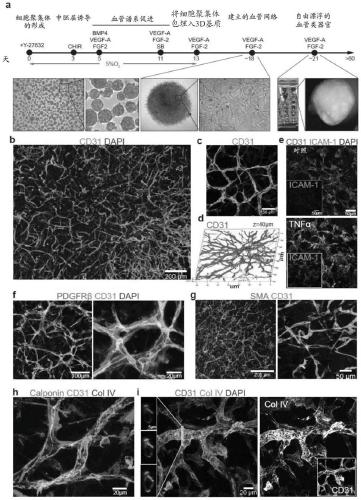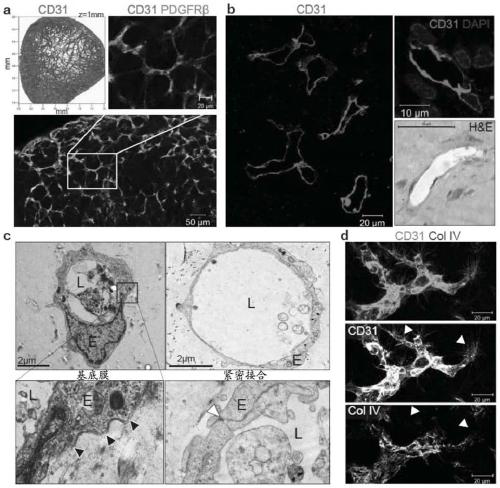Blood vessel organoid, methods of producing and using said organoids
A technology of organoids and blood vessels, applied in biochemical equipment and methods, vascular endothelial cells, cardiovascular system diseases, etc., can solve problems such as lack of similarity in vascular networks
- Summary
- Abstract
- Description
- Claims
- Application Information
AI Technical Summary
Problems solved by technology
Method used
Image
Examples
Embodiment Construction
[0024] The present invention provides methods for generating artificial vascular organoids. These artificial organoids are cultured in vitro, but have a highly similar structure to capillaries in vivo. Organoids are miniaturized and simplified forms of organs produced in vitro in three dimensions that display true microscopic anatomy. They are derived from one or several cells from a tissue, embryonic stem cells or induced pluripotent stem cells, which can self-organize in three-dimensional culture due to their self-renewal and differentiation capacity.
[0025] The inventive organoids derived from human stem cells recapitulate the structure and function of human blood vessels. 3D vascular organoids from embryos and induced pluripotent stem cells are provided. These vascular organoids contain endothelium, perivascular pericytes, and basement membrane, and self-assemble into a luminal network of interconnected capillaries. Human vascular organoids transplanted into mice form...
PUM
| Property | Measurement | Unit |
|---|---|---|
| diameter | aaaaa | aaaaa |
| diameter | aaaaa | aaaaa |
| diameter | aaaaa | aaaaa |
Abstract
Description
Claims
Application Information
 Login to View More
Login to View More - R&D
- Intellectual Property
- Life Sciences
- Materials
- Tech Scout
- Unparalleled Data Quality
- Higher Quality Content
- 60% Fewer Hallucinations
Browse by: Latest US Patents, China's latest patents, Technical Efficacy Thesaurus, Application Domain, Technology Topic, Popular Technical Reports.
© 2025 PatSnap. All rights reserved.Legal|Privacy policy|Modern Slavery Act Transparency Statement|Sitemap|About US| Contact US: help@patsnap.com



